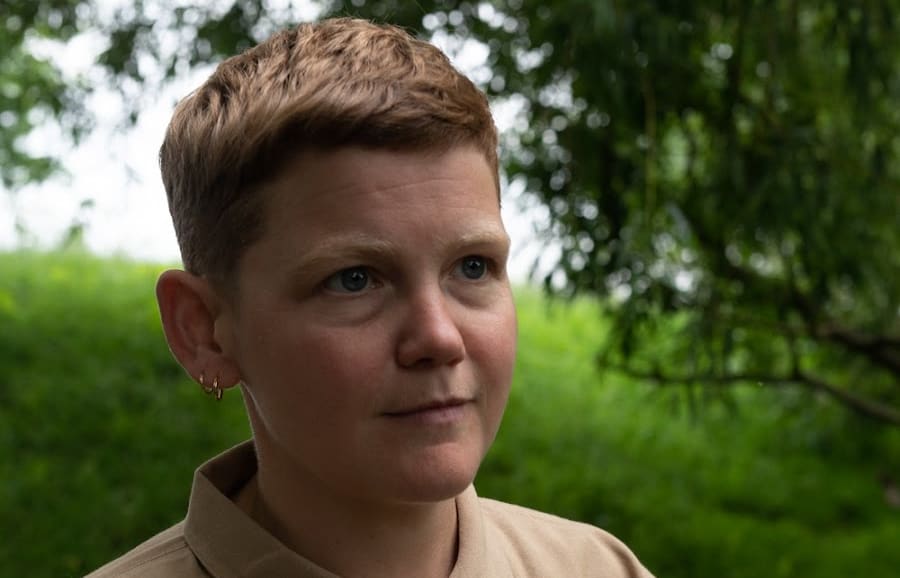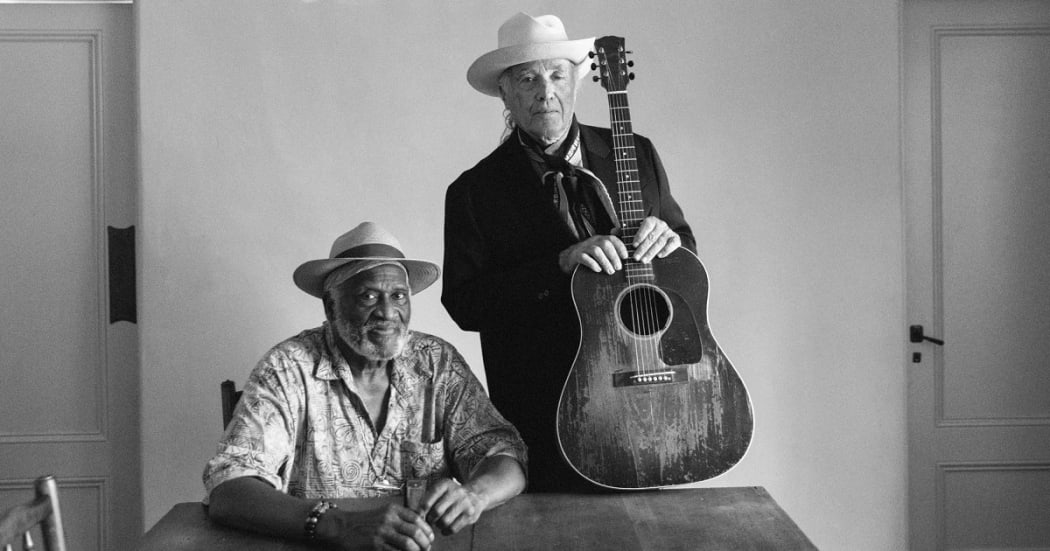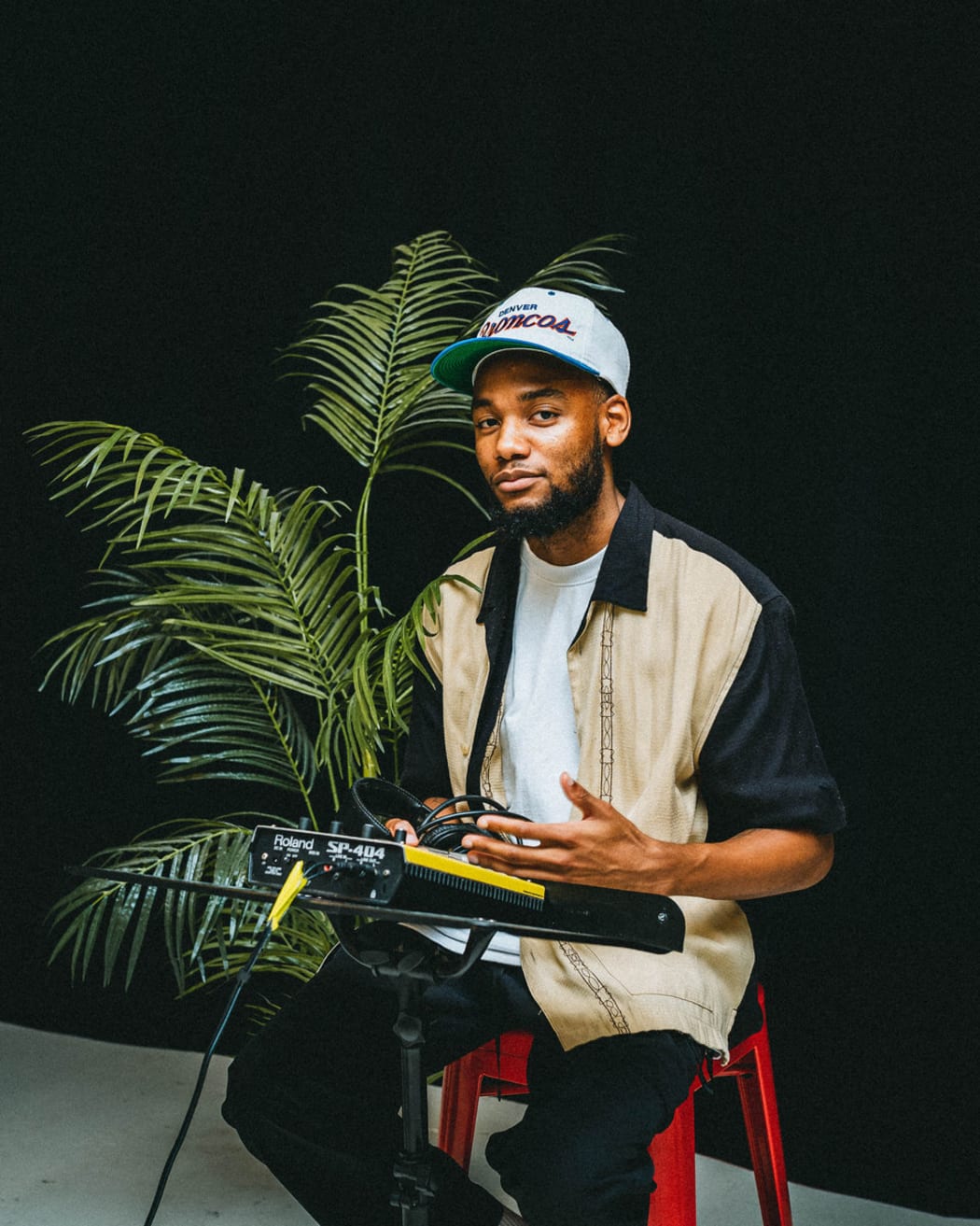Tony Stamp reviews the latest from British poet and musician Kae Tempest, and several new instalments from Tāmaki beatmaker SR Mpofu, while Elliott Childs assesses the reunion of legendary singers/ guitar players Ry Cooder and Taj Mahal.
The Line is a Curve by Kae Tempest

Kae Tempest Photo: supplied
I recently sent my friend a song by the British artist Kae Tempest, without any context, and they replied "Is this poetry?"
The answer is ‘yes’. Tempest is always credited as a poet first and foremost, in fact they’ve published six books of poetry, as well as a novel, a non-fiction book, and a spoken word album.
But it’s their work as a musician, in conjunction with producer Dan Carey, that has reached the most people, and with good reason. It has hip hop in its DNA, and other electronic genres, but it’s the marriage of Tempest’s plaintive voice with the music’s deep well of emotion that turns their thoughtful, thought-provoking words into something truly special.
Kae Tempest started working in a record store aged 14, and first performed aged 16 at a hip hop open mic night. Their first few albums were beat heavy, but 2019’s The Book of Traps and Lessons stripped away a lot of the rhythm, and found them performing over drones, or a piano, or sometimes no backing.
The Line is a Curve is even more adventurous, deliberately moving from sterile environments to warmer acoustic ones, and back again. The first few songs are based around lonely synths, but by the time we get to ‘These Are the Days’, there's a live band and brass section, sounding close to seventies psych rock.
Dan Carey has co-written and produced every Kae Tempest song, and their chemistry is fascinating. Part of the mental exercise behind this album seems to be pairing the right sounds with the right song, and sequencing them so that, when listened start to finish, it all flows like one piece of music.
In interviews Kae Tempest frequently talks about our shared humanity, and it’s this aspect of their music that hits hardest - a constant refrain of empathy. On their album Europe is Lost each song was from the perspective of a different character, like Esther, described as ‘‘a carer working nights, who’s worried about the world’. They finished The Book of Traps and Lessons with ‘Other People’s Faces’, which talks about finding solace in others, even when things are bad.
On this album's ‘Salt Coast’, they channel that empathy perfectly, with lyrics about leaves and rain (presumably describing England), as the music becomes increasingly, intoxicatingly emotive.
When asked recently “who is Kae Tempest”, they responded “Kae Tempest is the words”, and while I haven’t spoken much about their words here, they are dazzling and delicate throughout.
To give one example of the thought put into each one, let’s take the album’s title, The Line is a Curve. To understand it, you need to know that Tempest came out as trans non-binary two years ago, and this album is part of a process of them making peace with the idea that their gender and their music are intertwined.
The album is constructed in such a way that it starts melancholic, becomes hopeful, then loops back around to melancholic. This reflects the idea that hope, and being happy in your own skin, are things to be worked at; life continues through good and bad, and so: the line is a curve.
It’s an idea that informs the whole record, most specifically on ‘No Prizes’, where they refer to decision making as taking your shot "for the love of the game"; i.e. life. Liane La Havas sings the hook “I just want to keep climbing”. It’s just one example of the profundity Kae Tempest puts into everything; music and words alike. TS
Get on Board by Ry Cooder and Taj Mahal

Taj Mahal and Ry Cooder Photo: supplied
The idea of the Supergroup is one of those 70’s rock tropes that over time has become a parody of itself. The term conjures up images of bands like Cream or Crosby Stills and Nash where the past successes of their various members create an atmosphere where their competing egos drive them to create great music, but inevitably tear the group apart.
The Rising Sons, a little known band from Los Angeles who broke up less than 2 years after being formed in 1965, was essentially the reverse of a supergroup. Bass player Gary Marker, went on to join Captain Beefheart’s magic band and their two consecutive drummers went on to play in Spirit and The Byrds respectively. But what I’ve not mentioned yet is that the band’s two singers and guitarists were Taj Mahal and Ry Cooder, both of whom have separately gone on to forge successful and celebrated careers recontextualising the history of American blues and folk-song for a contemporary audience.
When the Rising Sons split, the two went their separate ways. There have been a handful of collaborations between them over the last 50 or so years but Get On Board is the first full album they’ve worked on together since the 1960’s. For this illustrious reunion of these two “Old timers” as Cooder puts it, they have chosen to record an album of Sonny Terry and Brownie McGhee songs. Piedmont style blues musicians, Terry and McGhee were a duo for nearly forty years and played together up until the early 1980s. Later in their lives they were two of the last living links to the blues musicians of the past, both of them having played with Blind Boy Fuller in their early years.
Get On Board features Mahal on Harmonica, piano and vocals (taking the Sonny Terry role) Whilst Cooder sings and plays guitar, mandolin and banjo. His son and long time percussionist Joachim Cooder also plays on the record in place of Coyal McMahan who played maracas on the original.
Most of this record has a relaxed, loose feel. It’s as if these recordings were made purely for the enjoyment of Mahal and Cooder. The setting for the sessions was Joachim Cooder’s living room in California, and you can hear that informal atmosphere creeping in to the music. Often you’ll hear Cooder laugh midway through a line and when the two of them sing together their vocals drift in and out of synch, though they always find their way back. Like many old blues recordings, some of these songs don’t seem to have specific start points. You’ll hear Cooder play a guitar line or two whilst Mahal makes comments and settles in and then suddenly he’s singing the opening lines to the song. It gives the whole experience the natural and organic feel that blues and folk fans feel is so important to the music they love.
For the most part these songs are faithful reproductions of the originals. The two musicians fall easily into the roles set out by McGhee and Terry and there would really be no reason to change the arrangement of songs like 'Midnight Special' considering how well known they are. Every so often though, there are flashes of that re-invention of the old songs that Cooder and Mahal are so well known for. The version of 'Packing up and Getting Ready to Go' being the most obvious. One of the more polished and produced tracks on the record, it’s built around Cooder’s funk influenced Banjo riff (which is far more enjoyable than that description sounds) and Joachim Cooder’s kick drum. It’s very different from the gospel infused Terry and McGhee version, but at the same time, perhaps because of the backing vocals, it feels rooted in the same musical traditions.
Both Ry Cooder and Taj Mahal saw McGhee and Terry play live many times and even spent time getting to know them personally in their later years. In a promotional video for the album, Mahal says that the making the record made them feel as if they had completed a circle, finally joining back up with the music that inspired them when they were younger. The name Get On Board is taken from a record Terry and McGhee made for Folkways in 1952 and they even went as far as to recreate the cover.
At its core this is a record about two old friends re-uniting to play the music they bonded over decades ago and its obvious just how comfortable they are with each other and the repertoire. The playing is both loose and precise at the same time and they treat the source material with reverence in the most irreverent way. It’s a joyous celebration of friendship, both theirs and Terry and McGhee’s, as well as the fun of making music together. EC
Various by SR Mpofu

SR Mpofu Photo: supplied
In February last year I reviewed the second EP by Tamaki Makaurau beatmaker SR Mpofu, and since then he’s released five more. He told me via email he’s planning to put one out every month in 2022. Mpofu is in his early twenties, and doing this all himself, but it’s not just the work ethic that impresses me - it’s the consistency of ideas and production; the sound of someone nudging forward with every release, chasing the perfect groove.
‘Not Yet Ma G’ from January’s Easy Writers has a seventies soul vibe running through it, with a jazz flute that could’ve been plucked from an old blaxploitation film. Easy Writers 2 followed in February, with tracks like ‘The Journey’, which pairs a wistful piano sample with a typically in-the-pocket beat.
A small detail that pays dividends is the way Mpofu programmes his drums - nothing is sitting exactly on the beat; each hit is giving room to breathe. It suggests he played each sample by hand, and gives the music that slightly woozy feel. He leaned into this even harder on Slim’s Groovers, which came out in March, featuring some rhythms that sound downright drunk.
Which brings us to April’s SR In The House, in which the tempo is raised, and the dancefloor beckons. Mpofu’s palette keeps expanding too, like the funk wah lead on ‘Wonky’.
Another slightly geeky thing I’ll point out is that the frequencies in these tracks are balanced perfectly, which means that each part has room to breathe in the mix. It’s an art unto itself, and SR Mpofu has it down pat.
He’s the kind of young artist I find really inspiring, dabbling in genres like jazz, funk, soul, and psychedelia within the framework of beat music. It feels like someone who's found what they love to do, and is working hard to keep doing it.
Which means that given the self-imposed monthly release schedule, I have eight more EPs to look forward to this year. TS

